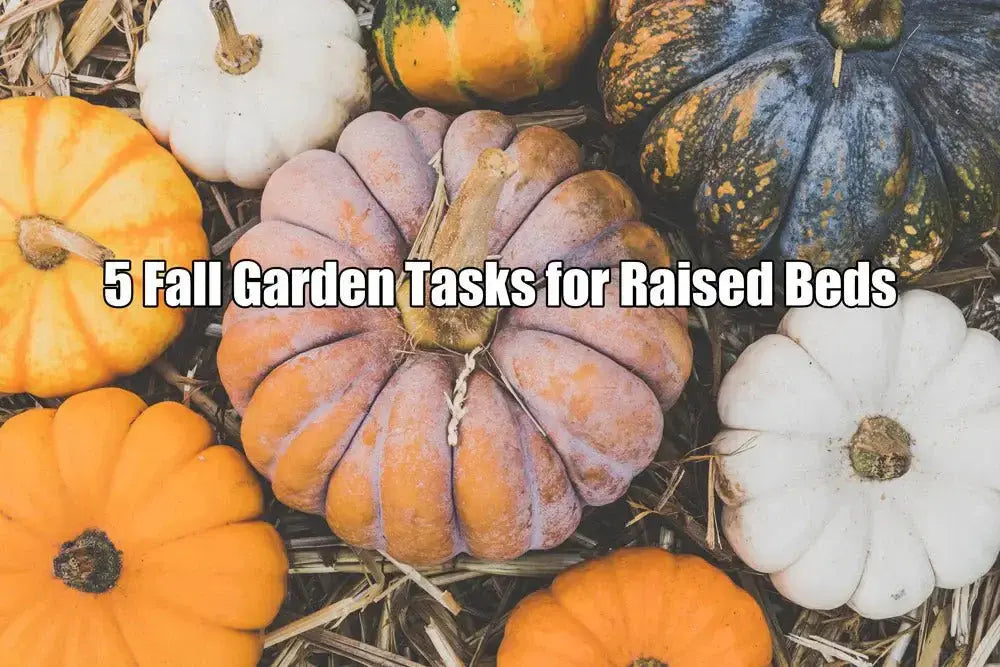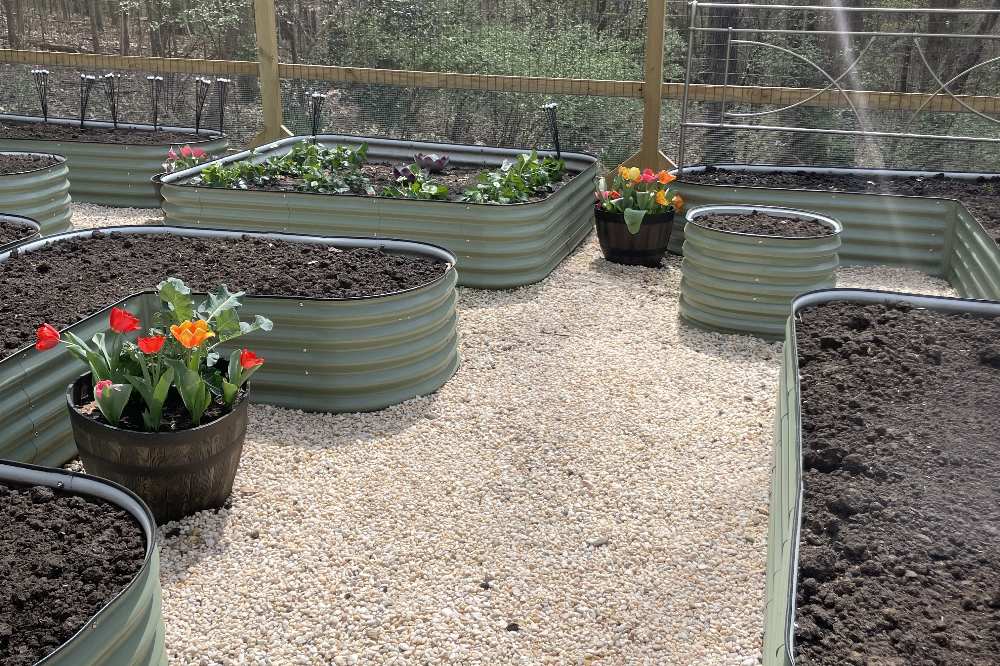Vegega Garden
July 26th, 2025
How to Prevent Soil Erosion and Slumping in Raised Garden Beds
Guide to Fix Raised Bed Soil Slumping After Rain
Well, it happened again. A lot of heavy rain came down, and you noticed that the soil in your metal raised garden beds is not the same. One day, everything looks lush and tidy, and the next, your soil is slumped in the center or even spilled out over the sides. All you wanted was a healthy garden, so how can you fix soil erosion and slumping? We know where you’re coming from, and we know that, with raised bed gardens, you can come face to face with some issues. Thankfully, we know exactly how to make them right. And today, we will help you stop your raised bed soil from slumping.
⬇️Click and Jump to section
- Why Is My Raised Bed Soil Collapsing?
- How to Build Raised Bed Edges to Prevent Slumping
- Using Plants to Prevent Soil Erosion in Raised Beds
- Improving Soil Composition to Prevent Erosion and Slumping
- Protecting Raised Beds from Heavy Rain and Wind
Why Is My Raised Bed Soil Collapsing?

One of the most common questions we get is: Why is my raised bed soil collapsing after rain? It usually comes down to three things:
- Improve soil fertility and structure
- Prevent disease carryover
- Ensure timely planting of fall-friendly crops
- Maximize the limited growing window before frost
Rain can easily wash away the top layer of soil, especially if you use “fluffy” soil. If this is the case, your bed should have proper borders or root systems to hold it together. This is how you will prevent the soil from spilling over. Check this guide to knowledge how to enhance soil drainage with raised beds.
How to Build Raised Bed Edges to Prevent Slumping

First things first - your raised bed structure plays a major role in stopping soil slump. We’ve learned that well-built, reinforced edges are a gardener’s best friend.
- Choose Tall, Sturdy Materials - Using 17-inch or even 32-inch tall galvanized steel beds helps keep soil contained, especially during heavy rains. These beds don’t warp or bow out like wooden ones sometimes do, and they hold up season after season.
- Reinforce the Corners - Even in solid beds, the corners are usually the first places to shift. Use corner brackets or internal supports to prevent bulging and keep the structure tight.
- Add a Bottom Barrier - Lining the bottom of your raised bed with stainless steel mesh can help prevent soil loss from below while keeping pests like burrowing rodents out. It also adds a little structural support to keep the soil from shifting over time.
- Avoid Overfilling - We used to pack our raised beds right to the brim, but all that extra soil is more likely to wash over in heavy rain. Now, we leave a 1-2 inch gap at the top, especially in the rainy season.
By creating a strong physical barrier, we dramatically reduce how much soil ends up outside the bed or compacted at the center.
Using Plants to Prevent Soil Erosion in Raised Beds

Plants aren’t just for looks or produce. They’re also one of our best tools for preventing soil erosion and soil slumping. Roots hold soil in place, absorb water, and help maintain structure.
Start with Ground Covers
Low-growing herbs like thyme or oregano make great living mulch. We plant them along the edges of our raised beds, where water runoff tends to be strongest. Their roots stabilize the soil, and their leaves soften the impact of rain.
Add Deep-Rooted Plants
Root systems like those in tomatoes, peppers, or perennials (like echinacea or lavender) go deep into the soil, helping to anchor the inner mass of your bed. The more root variety, the better your soil structure will be.
Cover Bare Soil
One of the biggest mistakes is leaving too much exposed soil. Even between plantings, we now use mulch or a quick-growing cover crop like clover to keep soil in place.
Plants slow down rainfall impact, reduce splashback (which spreads disease too), and encourage a stable ecosystem underground.
Improving Soil Composition to Prevent Erosion and Slumping
The kind of soil you use is just as important as how you contain it. If you’re using a fluffy blend with too much compost or peat moss and not enough mineral content (like sand or clay), your bed is more prone to soil erosion and collapsing. Here’s how we’ve adjusted our mix over time:
Use This Formula as a Base
A good base mix includes 1/3 compost (diverse sources), 1/3 peat moss or coconut coir, and 1/3 vermiculite or perlite. But we like to add some native soil or topsoil too, something with more weight and structure to reduce excessive settling.
Add Worm Castings or Biochar
We regularly mix worm castings to improve soil health and structure. It helps keep things aerated and water-retentive without making the soil too soft.
Refill Annually
Raised bed soil sinks naturally over time, especially after the first season. We top off with a layer of compost or aged manure each spring to keep the bed full and fertile.
By creating a heavier, more balanced soil mix, we reduce soil slump and improve long-term stability.
Protecting Raised Beds from Heavy Rain and Wind
When the weather gets wild, our raised beds need a little extra protection. Here’s what’s worked for us:
- Use Garden Bed Covers - We’ve had great results using lightweight net covers during the rainy season. They help break up the impact of rainfall, reduce erosion, and even keep squirrels or birds from digging.
- Divert Rain with Simple Barriers - If you have multiple beds, consider placing stepping stones or gravel pathways between them. It helps manage drainage and keeps water from flowing directly into or over your beds.
- Install a Drip Irrigation System - We’ve switched from hand watering to drip systems in most of our Vegega raised beds. This keeps moisture levels even and reduces sudden saturation that causes soil erosion.
Recommended Raised Beds for Fall Crops
Conclusion
Raised beds are one of the most efficient and rewarding ways to garden. But, they do have their ups and downs too. If your raised bed soil is collapsing after rain, don’t panic. It’s normal, and it’s fixable. Just take it step by step:
- Strengthen your bed edges.
- Choose a soil blend that holds structure.
- Use plants to protect the surface.
- Cover and manage your beds during harsh weather.
As you can see, you don’t need to do much to protect your garden from soil erosion and slumping. If you liked this blog, check out other blogs at Vegega!



